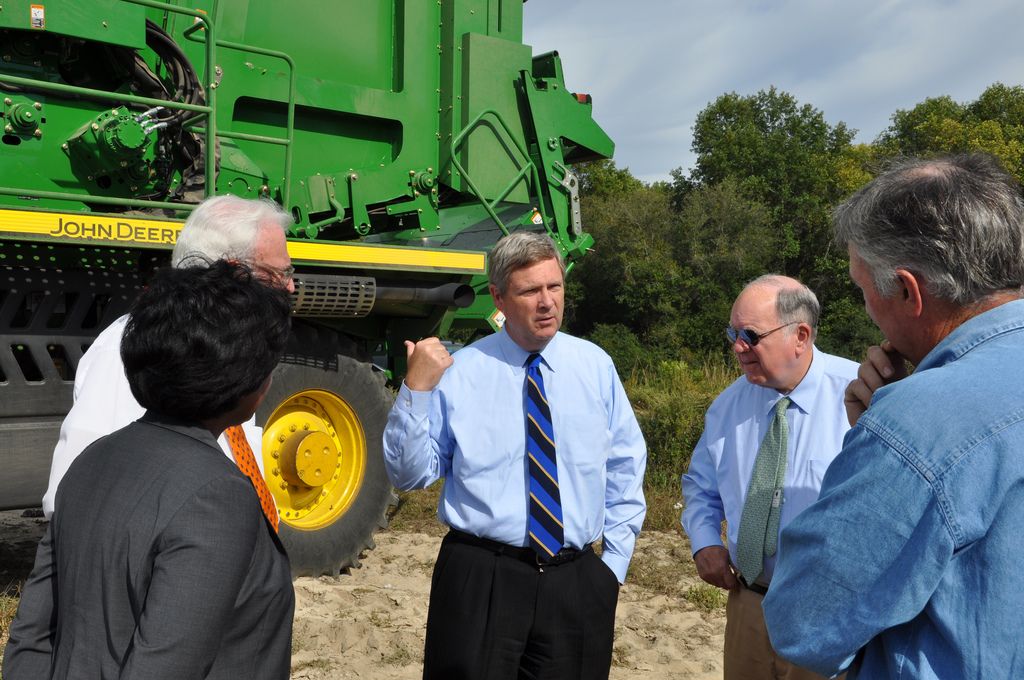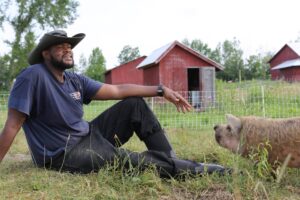This week, US Secretary of Agriculture Tom Vilsack announced the launch of a new $100 million private investment fund dedicated to investing in small food and agriculture businesses in rural America.
Open Prairie Ventures, a Midwest agtech investment firm, will manage the Open Prairie Rural Opportunities Fund, as first revealed by AgFunderNews last year.
This is Open Prairie’s fourth fund, and the US Department of Agriculture’s fourth Rural Business Investment Company (RBIC) under the Rural Business Investment Program (RBIP).
The RBIP is part of the White House’s Made in Rural America export and investment initiative designed to draw capital and infrastructure support to rural communities in the US.
The Open Prairie Rural Opportunities Fund will mostly invest in technology companies with high-growth potential across the food and agribusiness value chain and rural America, including those in the crop protection, agricultural production and processing, precision agriculture, and information and data management sectors.
The USDA is utilizing RBIP to license funds to invest in enterprises that will create growth and job opportunities in rural areas, with an emphasis on smaller enterprises. Last year, Secretary Vilsack announced the conditional approval of two other RBICs – Innova and Meritus Kirchner Capital. In 2014, Advantage Capital was granted a license for its $150 million Advantage Capital AgriBusiness fund.
“The RBIC that is currently making investments, ACAP, many of the facilities they are investing in are more production oriented, manufacturing instruments that will help cage free egg laying facilities as well as organic crop production,” Vilsack says. “But this particular fund is going to be looking at the technology side. It is a nice complement to the three we have already approved.”
According to the Secretary, the USDA has a few more applications for RBIC licenses in the pipeline and the agency likely has authority to authorize one more fund before the end of the Obama administration.
The Secretary shared some of his thoughts on where there may be the most need and opportunity for agtech, first commenting that anything regarding precision ag has real potential to help large-scale production.
More effective irrigation systems that combat water scarcity while promoting efficiency and the emergence of renewable energy sources that can help power farms are additional key opportunities, he said.
“The energy sources can benefit not only commercial operations but smaller and mid-size operators who are deeply concerned about input costs and expenses.”
And when it comes to driverless tractors and combines, he calls them “a pretty remarkable advancement.”
Commenting on AgFunder’s 2015 investment report, which reported $4.6 billion in agtech funding during 2015, Vilsack said:
“I come from a place where a billion dollars is a lot of money and I haven’t been in DC long enough to where it doesn’t still seem like a lot. There is growing awareness and growing interest on the part of investors to look at ways that investments can be made in rural areas, whether it is venture capital or equity purchases that RBICs provide, or whether it is the extension of credit that we saw CoBank announce.”
The launch of the Open Prairie Rural Opportunities Fund this week coincided with the third White House Rural Opportunity Investment Conference in Washington, DC, which focused on investing for impact in the rural economy. And Vilsack highlighted the important role that agtech can play in cultivating job growth in rural economies.
“To the extent new technologies are established, you have opportunities to create jobs connected to the supply chain and to getting an idea from the drawing board, to the factory, to the farm,” he says. “If these jobs are in rural areas, they can help revitalize and rebuild the rural economy.”
As for the broader challenges facing the agriculture sector, Vilsack can think of many. And while he was careful to note that these challenges all have equal importance, he listed the growing average age of US farmers, land tenure, and food waste as examples of problems we’ll need to overcome.
“We need to encourage new people to get into this business. This is not just an issue that is being felt by the US—it’s being felt by every G7 country,” he says.
Land tenure and the transfer of wealth also tie into the rising age of the average farmer.
“We will see a terrific increase in wealth transfer in the next 15 years with older landowners passing on their land to the next generation, which may or may not be on the farm. That raises the issue of whether those who are non-farm owners have the same motivations regarding conservation and resiliency. Are those concerns as intense as the actual farmer might view them, or are they more interested in the bottom line cash rent that will be paid for the use of their land? How does that impact overall soil health, water quality, etc?”
He also thinks there is a major opportunity to recapture food waste, which would take some of the pressure off the need to increase production to meet the growing population demand.
Bottom line? When it comes to agtech, Secretary Vilsack sees an “endless list of opportunities to make us more productive, efficient, and profitable.”
Have news or tips? Email [email protected]




